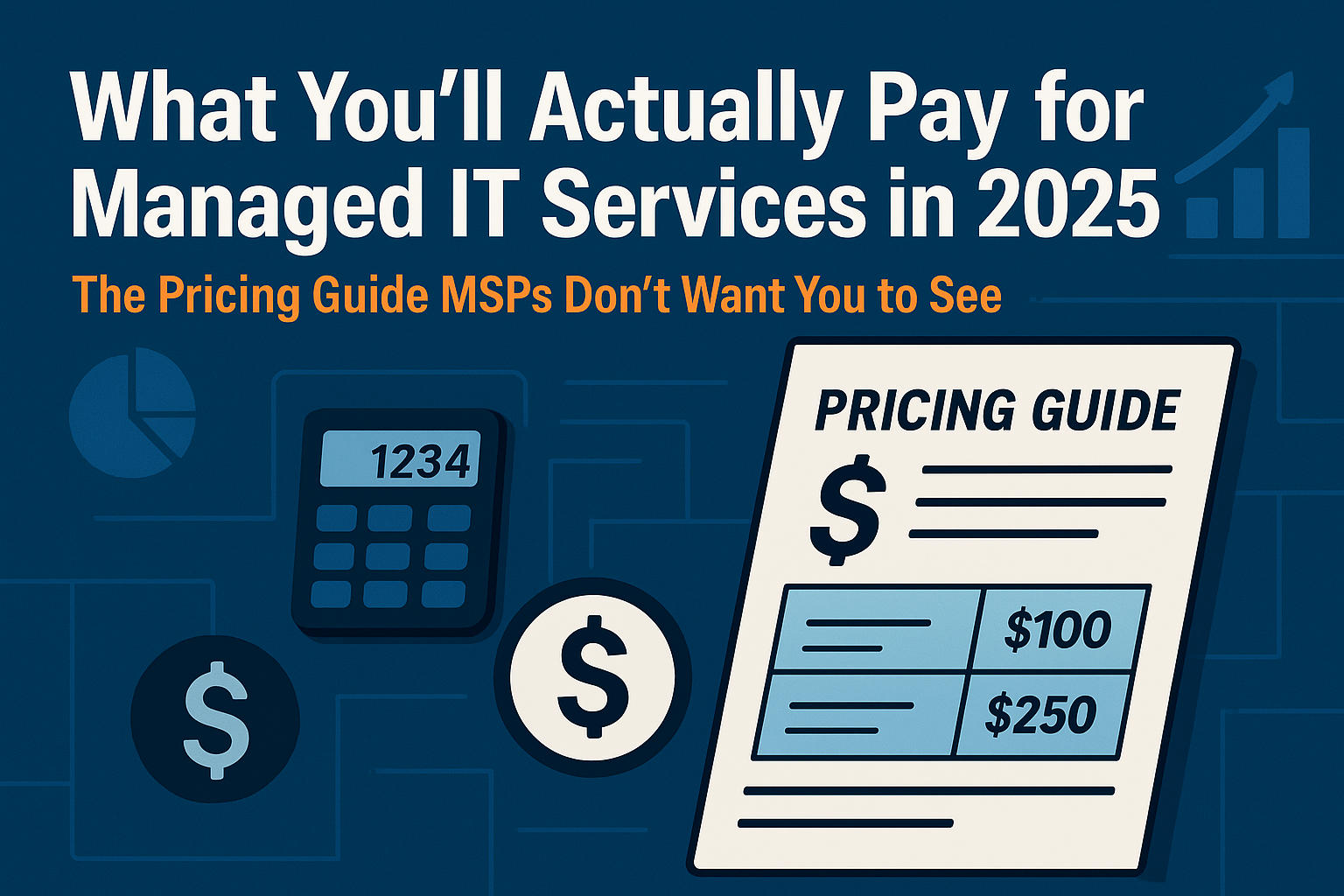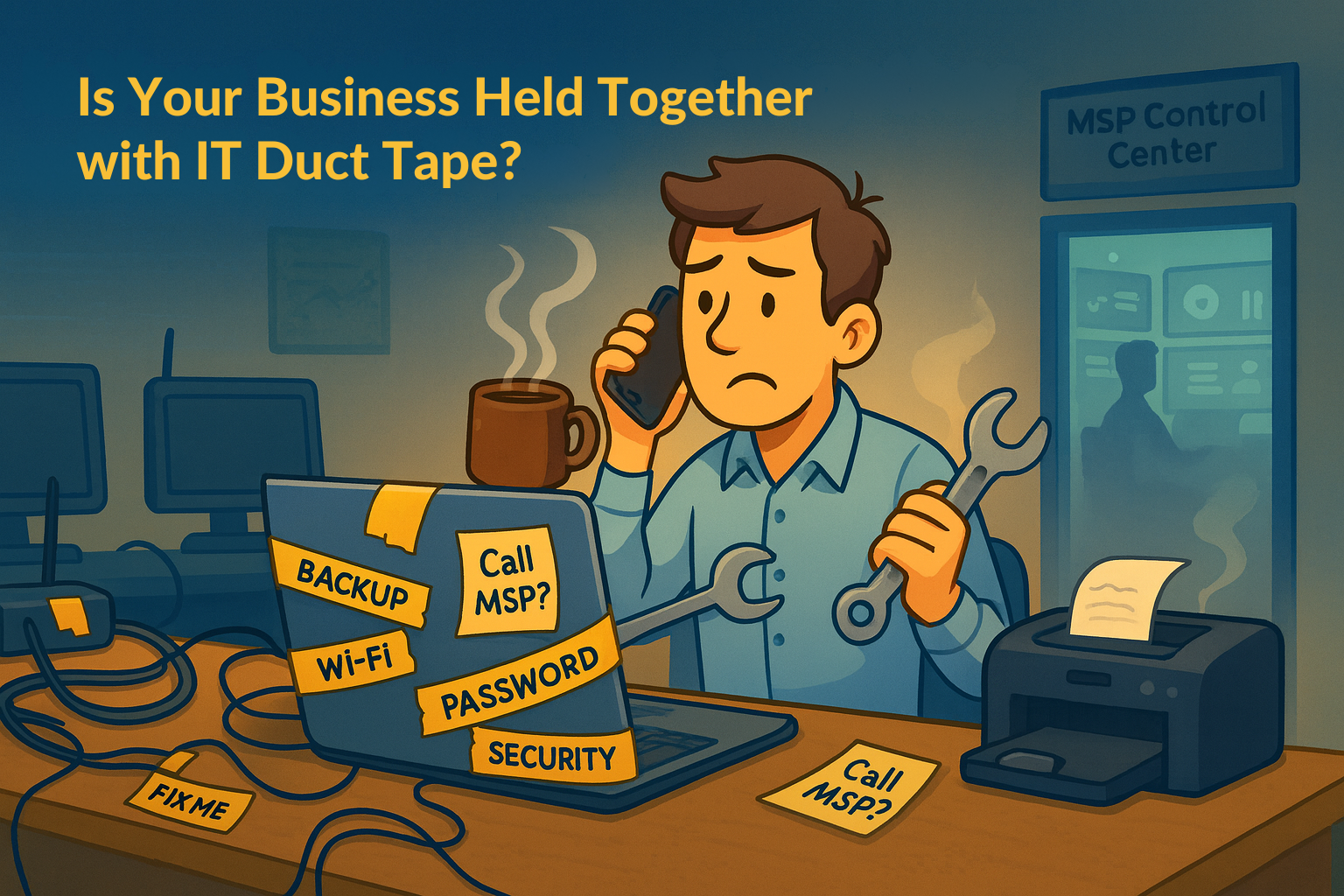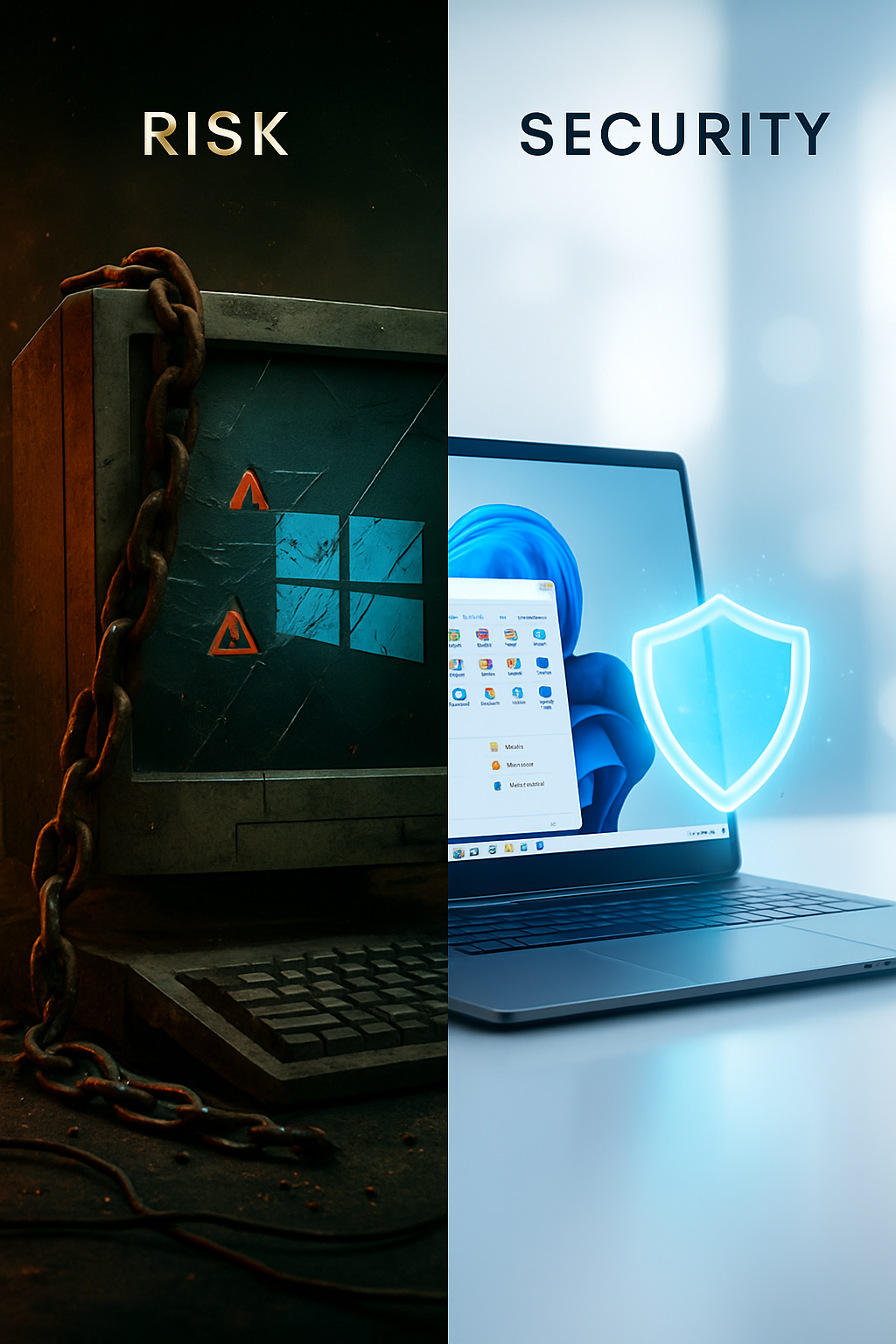The Real Deal on Proactive Monitoring & Remote IT Support: What Small Businesses Actually Need to Know in 2025
Look, I Get It—You're Tired of IT Surprises
Picture this: It's Monday morning, you've got a big client presentation at 10 AM, and suddenly... nobody can access the shared drive. Your team's scrambling, you're sweating, and you're frantically Googling "emergency IT support near me" while watching the clock tick away.
Sound familiar?
Here's something most IT companies won't tell you upfront: the vast majority of these disasters don't just happen out of nowhere. Your systems were probably sending up flares for days, maybe even weeks. But who was watching?
This is where proactive monitoring from a Managed Service Provider (MSP) comes into play. And before you roll your eyes thinking this is another sales pitch—hang on. I'm going to give you the straight talk on what this actually costs, whether it's worth it, and yeah, even where it falls short.
Because honestly? If we're being real with each other, not every business needs this level of support. But many do, and they just don't know it yet.
So What Exactly IS Proactive Monitoring? (Beyond the Buzzwords)
Alright, let's cut through the jargon.
Proactive monitoring basically means someone—or more accurately, sophisticated software plus real humans—is constantly keeping tabs on your IT systems. They're looking for warning signs and fixing problems before they blow up in your face.
Think of it like having a really paranoid friend who checks your smoke detectors, tests your fire extinguishers, and makes sure nothing's about to go sideways. Annoying? Maybe a little. But also super valuable when disaster strikes.
This is totally different from the old-school "break-fix" model where you only call the IT guy after everything's already on fire.
According to research from GSD Solutions, companies using proactive monitoring fix problems about 40% faster than the break-fix crowd. Plus, employees waste 50% less time sitting around waiting for IT to save the day (Cota). That's not nothing.
Here's How These Two Approaches Stack Up:
| The Break-Fix Way (aka what most small businesses are stuck with) |
The Proactive Monitoring Way |
|---|---|
|
|
Danny Cota from GSD Solutions puts it pretty simply: "Proactive IT management involves continuous monitoring and preventive maintenance to keep your systems running smoothly and securely" (Cota).
It's the difference between waiting for your car to break down on the highway versus actually getting those oil changes and checking your tire pressure.
The Benefits Everyone Talks About (But With Actual Numbers This Time)
Let's dig into what you actually get for your money. And I mean real benefits, not fluffy marketing speak.
1. Way Less Downtime (This One's Huge)
Every minute your systems are toast costs you money. For small businesses especially, extended downtime can literally put you under.
CBTS emphasizes that proactive monitoring delivers "reduced downtime, faster response times, and a healthier work-life balance for your IT staff" (Munoz). Their data shows that catching issues early—before they cascade into full-blown outages—makes all the difference.
Real talk: NCC Data reports that remote IT teams using proactive monitoring provide "instant assistance, resolving problems before they impact your business" with average fix times of just 20-30 minutes (NCC Data).
Compare that to waiting hours (or days!) for traditional break-fix support, and suddenly that monthly fee doesn't seem so crazy.
2. It Actually Saves You Money (I Know, Counterintuitive)
Yeah, you're paying a monthly fee. But here's what I've seen time and again: it's way cheaper than the alternative.
The Calit Group explains that MSPs are "adept at proactively monitoring, detecting, and swiftly addressing inefficiencies, diminishing the chances of significant system failures" (Mendoza). Translation? You avoid those nightmare $15,000 emergency repair bills.
EMPIST nails it when they note that "Proactive maintenance enables businesses to detect and address small issues early when they are cheaper and easier to fix" (Hitzeman). Spending $200 today to patch something beats dropping $20,000 on emergency system replacement next month. Every. Single. Time.
3. Better Security (Because Hackers Don't Sleep)
Let's talk cybersecurity for a second. Small businesses are getting hammered right now because hackers know you probably don't have Fort Knox-level defenses.
GSD Solutions found something pretty remarkable: organizations with proactive monitoring see a 75% drop in ransomware attacks compared to reactive-only setups (Cota).
Let that sink in. Three-quarters fewer ransomware incidents.
When one successful attack can literally destroy a small business—and I'm not exaggerating—that statistic alone should make you pay attention.
EMPIST points out that MSPs provide "24/7 cybersecurity monitoring" that's constantly watching for threats, pushing security patches, and maintaining whatever compliance standards your industry requires (Hitzeman).
4. Someone's Always Awake When Your Systems Decide to Act Up
Problems love weekends and holidays. It's like Murphy's Law specifically targets small business IT infrastructure.
Ruckus Networks states that "MSPs provide 24/7 monitoring and support, identifying and resolving issues before they impact the business" (Ruckus Networks). If you're running e-commerce or serving clients across time zones, this isn't a luxury—it's essential.
7tech claims their remote IT support offers "24/7 availability and proactive monitoring" with an average resolution time "under 12 minutes" (Juern). Twelve minutes! That's barely enough time to make coffee and start panicking.
5. You Get Expert-Level Help Without Expert-Level Payroll
When you partner with an MSP doing proactive monitoring, you're not just buying software. You're getting access to a whole team of specialists who deal with complex IT environments every single day.
IT Insights Rochester explains: "Hiring a reliable IT MSP offering proactive monitoring helps resolve issues quickly, maximizing your company's productivity and return on investment" (Hollenbeck).
These folks bring expertise that would cost you six figures (plural) to hire in-house. And honestly? Most small businesses can't afford that.
6. Your Team Can Actually Do Their Jobs
Here's some fascinating research from Kevin Kieller on LinkedIn: implementing advanced monitoring and diagnostic tools can lead to "50% reduction in labor required for incident management and 20% reduction in churn" (Kieller).
For your business, this means:
- Employees stop losing time to IT headaches
- If you have internal IT staff, they can focus on strategic stuff instead of constantly firefighting
- Technology becomes something that helps you grow instead of holding you back
Systems-X adds that "Remote IT support offers robust security measures and proactive monitoring that performs regular system updates and maintenance, preventing issues before they arise" (Brattain). Your people can focus on making money instead of troubleshooting why the printer won't work. Again.
How This Actually Works Behind the Scenes
Understanding what you're paying for helps you make smarter decisions. Here's the tech breakdown without getting too nerdy:
Remote Monitoring and Management (RMM) Software
Your MSP installs specialized software across your servers, computers, and network gear. These tools constantly check:
- How hard your systems are working and what resources they're using
- Security status—are patches current?
- Network connectivity and speed
- Whether applications are responding properly
- If backups are completing successfully
- Storage space and hard drive health
Smart Alerts (Not Just Annoying Notifications)
The MSP sets up intelligent alerts customized for your environment. Like:
- Server CPU running hot (over 85%) for more than 10 minutes
- Backup failures
- Weird network traffic patterns that might signal an attack
- Security updates that haven't been applied on schedule
Synthetic Transactions (Fancy Term for Fake Users)
Kevin Kieller describes how advanced MSPs use "synthetic transactions for testing" (Kieller)—basically automated processes that pretend to be users to make sure systems are actually working properly. This catches slowdowns before your actual employees start complaining.
Fixing Stuff Remotely
When problems pop up, technicians can often fix them without ever stepping foot in your office. Super helpful for:
- Issues happening at 2 AM
- Multiple office locations
- Software problems that don't need physical access
Let's Be Honest: What Proactive Monitoring Can't Do
Following the "They Ask, You Answer" philosophy, I need to be straight with you about the limitations:
Getting Started Takes Time
Switching from reactive to proactive isn't instant. Your MSP needs to:
- Audit what you've actually got
- Install monitoring agents on everything
- Set up appropriate alerts and thresholds
- Establish baseline performance metrics
- Document your entire environment
This usually takes 2-4 weeks and requires some coordination with your team. It's not difficult, but it's not instant either.
Downtime Won't Completely Disappear
Proactive monitoring dramatically cuts downtime, but it can't eliminate it entirely. Hardware still fails sometimes. Natural disasters happen. People accidentally delete important files.
The difference? These become rare exceptions instead of your weekly reality.
You're Paying Every Month Whether You "Use" It or Not
Unlike break-fix support where you might go months without IT bills, proactive monitoring requires consistent monthly investment.
For businesses that historically haven't had many IT problems, this can feel like paying for something you're not using.
But here's the thing: you're paying for prevention, expertise, and insurance against catastrophic failures that would cost way, way more.
Quality Varies Wildly Between Providers
Not all MSPs are created equal—not even close. Some offer genuine 24/7 human-staffed support with cutting-edge tools. Others provide basic automated monitoring with mediocre response times.
You really need to do your homework here.
What Does This Actually Cost? (Real Numbers)
Pricing varies based on several factors, but here's what you can expect:
Typical Monthly Costs for Small/Medium Businesses:
- Per-user model: $75-$250 per user per month
- Per-device model: $50-$200 per device per month
- Flat-rate model: $2,000-$10,000+ per month (depends on size and complexity)
What drives the cost:
- How many users and devices you have
- Complexity of your IT setup
- Support level (business hours only vs. 24/7)
- Industry compliance requirements (healthcare and finance cost more)
- Location and number of offices
- Age and condition of your current equipment
Most MSPs also charge a one-time setup fee ($1,000-$5,000) to properly configure everything and document your environment.
Questions You Should Ask Before Signing Anything
Based on all the research and sources, here's what to nail down:
- What's your actual average response time for alerts? (Get specific metrics, not vague promises)
- Is this automated monitoring or do you have real humans watching?
- What happens when issues occur at 3 AM on Sunday?
- Can I talk to 3-5 current clients similar to my business?
- What metrics do you report, and how often? (Monthly reporting should be standard)
- What's NOT included? (Exclusions matter a lot)
- How do you handle emergencies needing on-site support?
- Walk me through your escalation process. (Who do I talk to when things go really sideways?)
So... Is This Right for YOUR Business?
You should seriously consider proactive monitoring if:
- Your business genuinely depends on technology for daily operations
- You've got more than 10 employees
- Downtime directly costs you revenue
- You handle sensitive customer information
- You don't have in-house IT expertise
- You're dealing with frequent IT headaches
- You want predictable IT budgets
You might not need it (yet) if:
- You're a solo entrepreneur with minimal tech needs
- You have serious technical expertise in-house already
- Your operations can handle significant downtime without major consequences
- Your tech environment is extremely simple (though that's increasingly rare these days)
The Bottom Line: Prevention Beats Crisis Management
The data from all these sources points to the same conclusion: proactive monitoring and remote support is becoming the standard for how businesses manage IT.
Kevin Kieller's research showing "50% reduction in labor required for incident management and 20% reduction in churn" (Kieller) demonstrates clear ROI. GSD Solutions finding that organizations with proactive monitoring resolve issues "40% faster" while employees spend "50% less time waiting for IT resolutions" (Cota) quantifies the productivity gains in real terms.
For small and medium businesses, the question isn't really whether proactive monitoring delivers value—the evidence is pretty overwhelming that it does.
The real question is: Can you afford the cost of NOT having it?
When a single ransomware attack can run you $50,000+ in recovery costs, downtime, and lost business—and proactive monitoring cuts these attacks by 75% (Cota)—the math becomes pretty straightforward.
What to Do Next
Start by getting quotes from 3-5 reputable MSPs in your area. Ask them to audit your current setup and provide specific recommendations based on YOUR situation, not some template.
Compare their offerings on more than just price. Look at response times, reporting capabilities, and definitely talk to their current customers.
The peace of mind from knowing your critical systems are monitored around the clock, that disasters get caught early, and that expert help is always available—that's the real value here.
Your call. But at least now you know what you're actually choosing between.
Works Cited
- Brattain, Mike. "The Smart Choice for Businesses: Benefits of Remote IT Support." Systems-X , 24 Feb. 2025, www.systems-x.com/blog/benefits-of-remote-it-support.
- Cota, Danny. "What is Proactive IT Support (And Why Your Business Needs It)." GSD Solutions , 12 Sept. 2025, gsdsolutions.io/proactive-it-support/.
- Hitzeman, Marty. "Discover 6 Key Benefits of IT Managed Support Services." EMPIST , 31 Oct. 2025, empist.com/discover-6-key-benefits-of-it-managed-support-services/.
- Hollenbeck, Katie. "Working with an IT MSP: Pro Managed Service Provider." IT Insights Rochester , 20 Mar. 2025, itinsightsroc.com/insights/what-is-an-msp/.
- Juern, Neal. "How the Benefits of Remote IT Support Keep Businesses Running." 7tech , 12 Mar. 2025, www.7tech.com/benefits-of-remote-it-support/.
- Kieller, Kevin. "The Value of Proactive Monitoring for Managed Service Providers." LinkedIn , 2025, www.linkedin.com/pulse/value-proactive-monitoring-managed-service-providers-kevin-kieller-wgk7e.
- Mendoza, Stalin. "Top 6 Managed Service Provider Benefits for Your Business." Calit Group , 21 May 2025, calitgroup.com/managed-service-provider-benefits-for-your-business/.
- Munoz, Chris. "The benefits of working with a managed services provider." CBTS , 7 Nov. 2025, www.cbts.com/blog/the-benefits-of-working-with-a-managed-services-provider/.
- NCC Data. "Why Businesses Rely on the Benefits of Remote IT Support." NCC Data , 12 Mar. 2025, nccdata.com/benefits-of-remote-it-support/.
- Ruckus Networks. "Managed Services Provider: The Future of Networking." Ruckus Networks , www.ruckusnetworks.com/insights/managed-services-provider-the-future-of-networking/.










